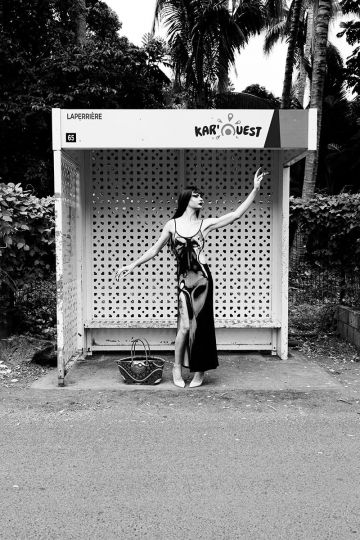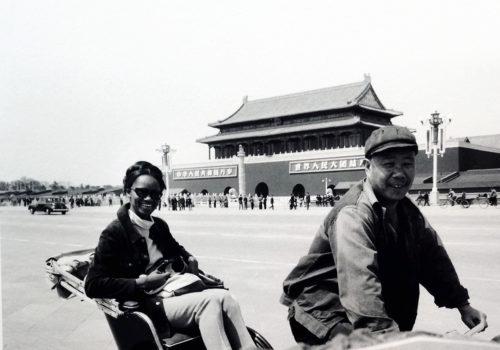The David Guiraud Gallery is pleased to announce the launch of the third exhibition in its project exploring the male body in the history of photography.
On this occasion, the gallery invites visitors to immerse themselves in the world of physical photography, an immense social and cultural phenomenon that remains relatively unknown. This movement, however, features numerous talented photographers who were pioneers of a unique artistic trend celebrating the aesthetics of the male body.
Physical photography is a movement that emerged primarily in the United States but was also significantly present in Europe and Japan. Its emergence was driven by the conjunction of two phenomena: the growing interest in physical culture since the 19th century and the boom of illustrated men’s magazines at the turn of the 20th century.
Men’s Magazines
The rise of illustrated magazines in the 19th and early 20th centuries stemmed from the realization that images sell. In the field of physical fitness and health, the magazine Physical Culture emerged in the U.S. in 1908, celebrating physical culture and muscle through numerous photographs of athletes.
In the 1930s, with the advent of bodybuilding, photographers such as Edwin Townsend, who worked with bodybuilder Tony Sansone, sought to highlight a perfectly muscular and harmonious body. This effort continued the fascination and admiration sparked by the strength and muscles of figures like Eugen Sandow.
Interest in bodybuilding became widespread, along with the image of the nude male body. However, these magazines focused solely on muscles, not on beauty or charm.
Physique Art
In the post-World War II era, Physique Art emerged. This movement, rooted in bodybuilding and performance, signaled the arrival of photographers who genuinely enjoyed producing such images. These artists aimed to make the male body even more beautiful and appealing, as they both knew and appreciated it. Their goal was no longer to coldly document an ideal aesthetic but to exalt and magnify it.
A phenomenon emerged across the U.S., similar to Bob Mizer’s work in California, where he founded the American Model Guild (AMG) in 1948. He soon published Physique Pictorial to distribute his images. By the early 1950s, this magazine was available almost nationwide, accompanied by a wave of new publications (e.g., Vim, Trim, Grecian Guild Pictorial).
These magazines marked a significant break by no longer seeking a morally and socially acceptable reason to showcase photographs of athletes who, although rarely posing nude, were nevertheless presented for the viewer’s gaze. The images were displayed purely for the model’s beauty and the viewer’s pleasure.
From Muscle to Culture
These new magazines, for the first time in centuries, openly displayed the desire to see attractive, naked men without pretense or justification. This direct celebration of the male body meant that photographers, editors, and readers alike revealed their attractions—an act fraught with risk in 1950s America.
When the government prosecuted a photographer, publisher, or any civilian for homosexuality, it almost always won, as homosexuality was a criminal offense. Federal prohibitions against sending frontal nudes through the postal service enabled authorities to raid photographers’ studios, seize negatives and prints, and imprison the creators.
This context highlights the significant risk and determination involved in producing nude photography in the 1940s and 1950s. The frequent attacks were fueled by the fact that these magazines were, in effect, the first gay publications and represented the only gay institution and culture in the U.S. during the 1950s and early 1960s.
On Obscenity
In post-war America, homosexuals did not exist as a recognized identity. Authorities viewed homosexual acts as behaviors of depraved men who were otherwise heterosexual. Homosexuality was both illegal and socially invisible. However, in 1893, Richard F. von Krafft-Ebing introduced the term homosexual, seeing it not as an act but as part of an individual’s identity. In 1948, Alfred Kinsey’s seminal study on sexual behavior revealed that one-third of adult men had experienced homosexual encounters.
In 1958, Chuck Renslow, the director of Kris Studio, was prosecuted by the Post Office (which prohibited mailing nude photos). Unlike others who defended their photos as art, Renslow argued that his images were not pornographic, asserting that the human body itself was not obscene. He pointed to the numerous male nudes in caryatids decorating the courthouse where his trial was held. In 1959, the U.S. Supreme Court ruled in his favor, although full and frontal nudity remained prohibited. It wasn’t until the 1965 trials involving Butch and Drum Magazine that the Supreme Court reaffirmed that the male body was not obscene, ending censorship on the matter.
American Physical Photography – 1930/1960
Galerie David Guiraud
5, rue du Perche
75003 Paris
01 42 71 78 62
Tuesday / Saturday – 14h30 / 19h
Information
Galerie David Guiraud
5, rue du Perche – 75003 Paris
November 15, 2024 to December 21, 2024






















